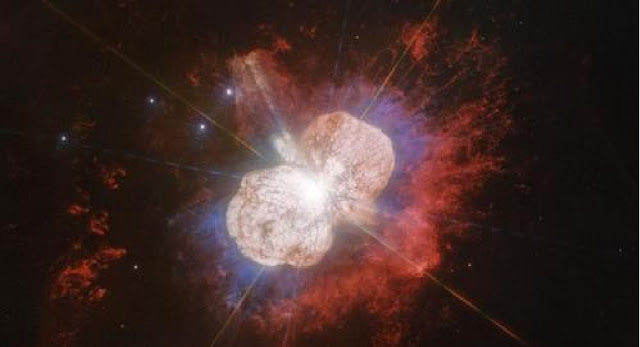The James Webb Telescope’s first supernova picture is incredible.
The $10 billion James Webb Telescope (JWST) is thought to have made its first sighting of a dead star bursting when it spotted a dazzling light in a galaxy three billion light years from Earth.
It is the star’s “final hurrah,” also known as a supernova, and it happens when the star runs out of fuel. This results in a decrease in pressure, which leads the cosmic object to expand to a size equivalent to around 333,000 Earths (at least five times the mass of our sun), at which point it explodes, ejecting masses of debris and particles.
The galaxy SDSS.J141930.11+5251593 is where the stellar explosion took place. JWST captured photographs there, demonstrating how an object’s brightness dimmed over the course of five days, providing a hint that led to the idea of a supernova.
The fact that JWST was not intended to search and detect new transients adds to the excitement, according to Mike Engesser of the Space Telescope Science Institute (STScI), which broke the news of the finding to Inverse.

James Webb not only observed a supernova, but the telescope’s inability to detect dead stars has researchers perplexed by the find.
The NIRCam sensor, which uses a wide spectrum of infrared radiation to detect light from the earliest stars and galaxies, was used to catch the prospective supernova.
A coronagraph is an apparatus that enables astronomers to capture images of extremely faint objects that are located around a core light object, such as star systems or, in this instance, stellar explosions.
Engesser told Inverse that since JWST was looking into a faraway galaxy, the supernova’s capture was accidental.
The fading star, which in photographs looks as a tiny brilliant dot, was not seen in views of the galaxy taken in 2011 by the Hubble Space Telescope.

The scientists discovered the tiny, brilliant light by using algorithms to compare the James Webb image to the identical image taken by the Hubble in 2011.
Engesser and his group employed software made to identify discrepancies in the images that produced the brilliant speck.
Even a week after being online, JWST has demonstrated that the money was well spent. On July 12, it not only delivered its first official deep-space images, but scientists also reported that a week later they had discovered the oldest galaxy known to man, dating back 13.5 billion years.
Just 300 million years after the Big Bang, which took place 13.8 billion years ago, the galaxy known as GLASS-z13 (GN-z13) was born.
The previous record holder, GN-z11, was found by the Hubble Telescope in 2015 and dates back 400 million years from the beginning of the universe.
JWST’s Near Infrared Camera (NIRCam) instrument, which is able to detect light from the very first stars and galaxies, obtained a view at GN-z13.
This Hubble Space Telescope view shows the twin stars of Eta Carinae and the leftovers of past eruptions that make up the Homunculus Nebula around the star.
Do not forget to share your opinion with us to provide you with the best posts !




0 Comments